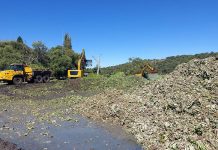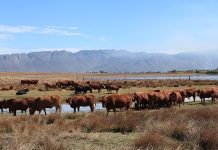| In recent years, no-till farming practices have been implemented on an ever-growing scale. As a result, many no-till farmers have adopted the common practice of surface-applying all their required soil amendments. This allows stratification of nutrients and acidity at surface level. The important crop production nutrient nitrogen can also be applied to the soil surface by planting legume winter annual cover crops between main crops. According to Prof Don Tyler, a soil management expert from the University of Tennessee, as soil pH goes below 5,5 exchangeable aluminium and exchangeable manganese become more abundant on soil exchange interfaces. However, no set quantity or concentration of these elements will cause toxic symptoms in crops, as the effects vary according to soil and crop types. “When the soil reaches a critically low pH value, lime should be applied to counter this acidity,” says Don. “Historically, results have shown that surface-applied lime is effective against soil acidity in no-till systems, although some scientists have recommended that limestone be incorporated in no-tillage when soil pH levels reach very low levels.” The Tennessee State Soil Laboratory uses the 1:1 water pH test and Adams and Evans buffer test. This test measures soil pH to a depth of 15cm and helps determine the amount of lime to apply. In general, lime application recommendations based on the Adams and Evans buffer test are lower than recommendations using different tests. Don believes these lower recommendations are more accurate. Plots were split again in spring 1995, and had pelletised agricultural lime applied to them at the full recommended rate and at half the recommended rate. A summary of the initial samples of the trial plots found that as their N-application rates increased, soil pH decreased. No-till plots generally had lower pH levels than their corresponding conventionally tilled trial plots. In addition, plots that had a hairy vetch cover also had lower soil pH levels than those soils without any cover. “Exchangeable aluminium levels were highest at the 101kg/N/ha application rate, with the hairy vetch plot also having higher levels of aluminium than the plots with no plant cover. A hairy vetch legume cover crop can contribute an additional 80kg N to the soil. When combined with fertiliser nitrogen, this results in excess nitrogen (a total of only 90kg is recommended) and excessive soil acidity,” says Don. “Excess nitrogen fertiliser causes increased soil acidity, and should be avoided for economical and environmental reasons. If nitrogen-fixing legumes are used in a system the contribution of the fixed nitrogen in the legume from the atmosphere should be taken into account in adjusting nitrogen for the no-tillage cropping planted into a legume cover crop in the following growing season.” |
Lime application in no-till
In recent years, no-till farming practices have been implemented on an ever-growing scale. As a result, many no-till farmers have adopted the common practice of surface-applying all their required soil amendments. This allows stratification of nutrients and acidity at surface level.
Issue Date 18 May 2007








